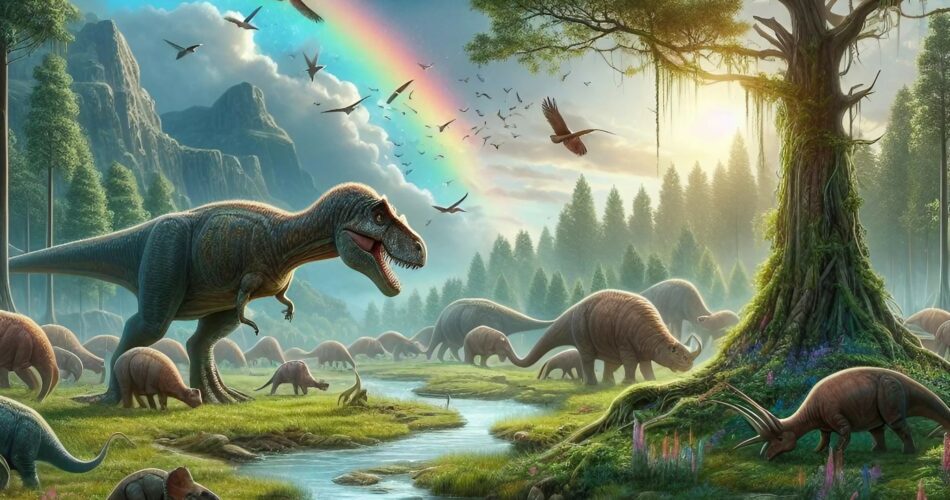Poop tells a lot about the past
Graduate student Karen Chin collaborated with famous paleontologist Jack Horner at a dinosaur dig site in Montana. Her task was to thinly section fossilized skeletons so that microscopic examination could take place. But her attention was drawn to something other than the bones.
“I learned that somebody had found fossilized feces, and I thought that was just the weirdest thing”, she recalls. So she requested to make a thin section of the feces. “And when I looked through the microscope, I could see plant cells that were ingested 75 million years ago by a dinosaur. And it blew my mind because I thought, ‘Man, this is how you can learn about interactions between dinosaurs, plants, and other organisms'”.
As reported here, as an acknowledged expert on dinosaur excrement, or “coprolites” as they are scientifically termed (the word comes from the Greek for “dung stones” or “poop rocks”), Chin is in high demand these days. In fact, a recent children’s book titled “The clues are in the poo“, is about her.



At the University of Colorado, she serves as the paleontology curator and a professor of geological sciences.
Upon entering Chin’s office, the first thing you notice is the abundance of petrified poop. They fill every available space, occupying drawers, cabinets, and shelves in shallow boxes.

“They just look like black rocks”, she explains. “They don’t have the sausage shape that you would expect to see in fossil feces. They’re kind of angular”.
That’s because they probably broke apart on impact because they had a good distance to fall from the dinosaur’s butt to the ground. Regarding dinosaur excrement, Chin claims that none are as large as the mounds seen in Jurassic Park. The largest one she looked at weighed six liters, which is somewhat less than a basketball.
“When I saw the movie, I thought that was rather humorous”, she says. “But it actually made sense because if you have a dinosaur in a zoo, they’re going to be producing so much dung. And what are the zookeepers going to do with it but pile it up in one place, so somebody could cart it off later?”
She claims that occasionally she can identify the one who dumped it by looking for skeletal remains close by. However, the poopetrator‘s identity is frequently unknown.
“As a paleo-ecologist, it may not be the most important thing to know exactly who produced it”, says Chin. “If you can tell who is eaten and think about some generalized food webs in the ancient environment, you can get a feeling for what that environment was like. And this is another reason why I like coprolites so much because they’re basically like receipts of transactions of carbon resources that are traveling through an ecosystem.”
Over the years, Chin has discovered a number of findings that provide information on these ancient food webs and dinosaur eating habits—information that is frequently scarce from skeletons. First, it was discovered that dung beetles—long believed to have coevolved with mammals following the extinction of the dinosaurs—were, in fact, present during the Cretaceous Period, happily delving into dinosaur excrement to provide food for their young.
Another discovery was that contrary to what some scientists had speculated, the tyrannosaurs ate their prey whole, including the bones, rather than being selective eaters who selectively removed meat from the bone. Chin could come to this conclusion after discovering pieces of bone and raw meat in their coprolites.
“A tyrannosaur would have had a skull about three feet long”, she says. “They couldn’t chew properly, so they would have grabbed and swallowed”.
Large amounts of digested wood found in the excrement of herbivorous dinosaurs were one of her favorite finds. It was confusing since modern herbivores are incapable of breaking down the hard lignin, which functions as a glue and keeps wood cells together; therefore, they are unable to digest wood. But Chin was obviously observing, in addition to the curiously strange crustacean shells, broken-down wood in the feces of plant-eating dinosaurs. Her hypothesis was that they might be consuming rotting wood instead of any healthy trees at all.
“White rot fungi can actually destroy the lignin, and if they do that, that increases the digestibility of wood by 30 to 60%”, she says. “So this meant these dinosaurs had been feeding on rotting wood. It was really surprising. You just don’t hear of that behavior in modern animals”.
At least, according to Chin, not in the huge mammals like elephants and rhinos that scientists frequently employ to simulate the eating habits of dinosaurs. However, dinosaurs were not mammals. They resembled birds far more than their contemporary ancestors. Certain seed-eating birds begin consuming insects while they are laying eggs in order to obtain protein to nourish the yolks and calcium to make shells.
“So my hypothesis was that because we found these coprolites in the nesting grounds of dinosaurs, the dinosaurs had to change their diet when they were reproducing”, she explains. “It seemed like, boy, if you’re a 25-foot-long duckbill dinosaur and you suddenly need to get a lot of protein, you’re not going to be like a T-Rex chasing after animals. But you could find a predictable source of protein in rotting wood in the form of invertebrates, insects, crustaceans, and worms—all kinds of things that would be hanging around rotting wood”.
Thus, the next time you believe that excrement is just foul-smelling waste, reconsider that.
“This is telling us about eating interactions between organisms, about recycling processes”, says Chin. “When you’re holding a piece of fossil poop, that really shows us how dynamic life has been—not only today but in the past”.
Photos by Casey A. Cass/University of Colo; Karen Chin
